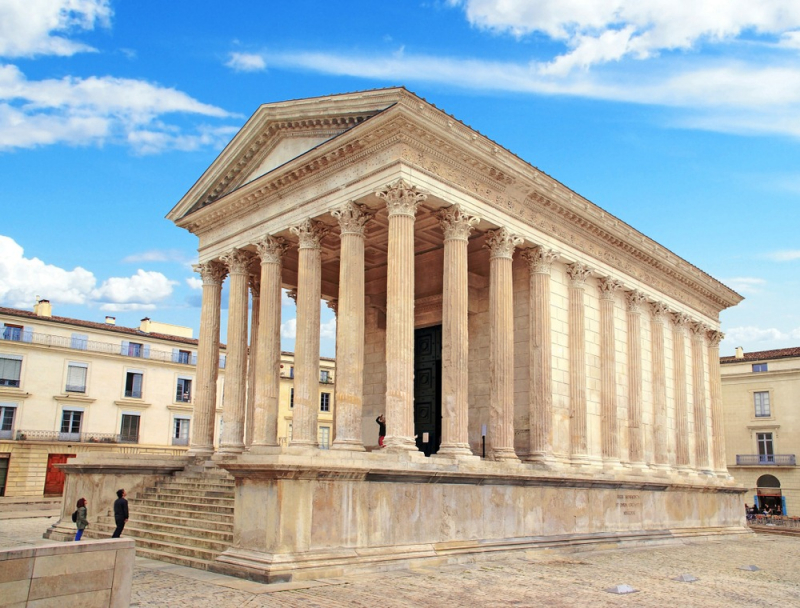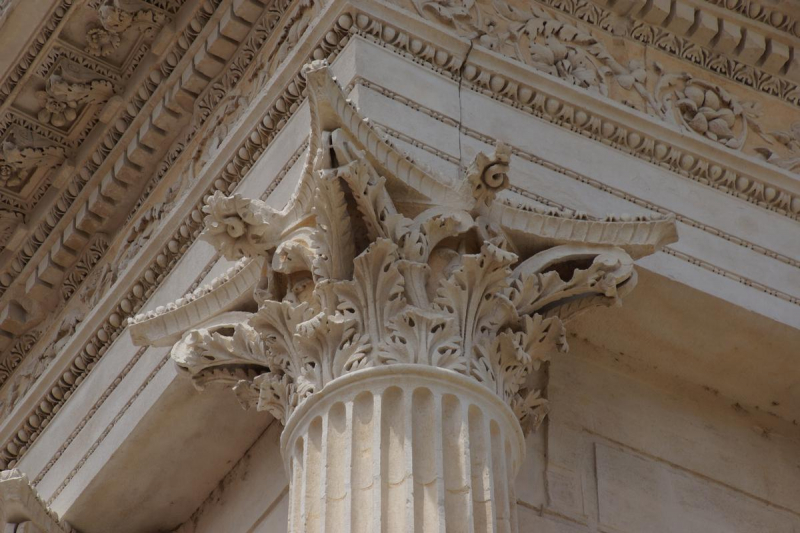Maison Carree
Gaius and Lucius Caesar were honored in the ancient Roman temple known as the Maison Carree. They were the sons of the Roman general Marcus Vipsanius Agrippa and the grandchildren of the Roman emperor Augustus. In honor of Gaius and Lucius, who both passed away at a young age, the temple was constructed. The building was designed in the Vitruvian manner and featured an identical replica of a Roman temple in the Tuscan style. Deep pronaos that covered almost a third of the temple's length could be found there. For the columns to be more complex and rich, the Corinthian order was introduced.
Maison Carree has a pseudo peripteral hexastyle design with twenty engaged columns embedded along the cella's walls and six Corinthian columns beneath the pediments at either end. The architrave is divided into three levels with the ratios 1:2:3 above the columns. The frieze and architrave are divided by egg-and-dart ornamentation. Under a row of extremely fine dentils, the frieze is embellished on three sides with excellent ornamental relief carvings of rosettes and acanthus leaves. However, compared to the decoration on the Parthenon or other Greek temples, the building's ornate carvings are not nearly as refined or mathematically flawless.
The temple was converted into a Christian church in the fourth century AD, saving it from being destroyed. It afterwards served as a warehouse, a stable, and a town hall. It now functions as a museum. This is also the seventh most exemplary structure of ancient Roman of architecture we want to mention.












